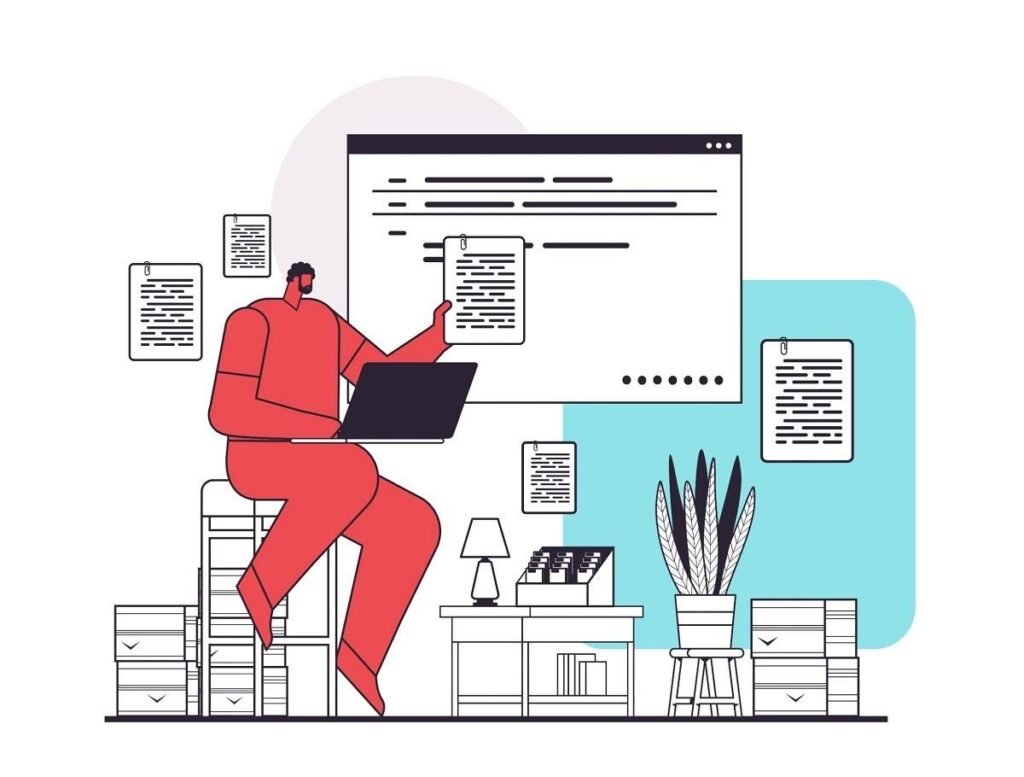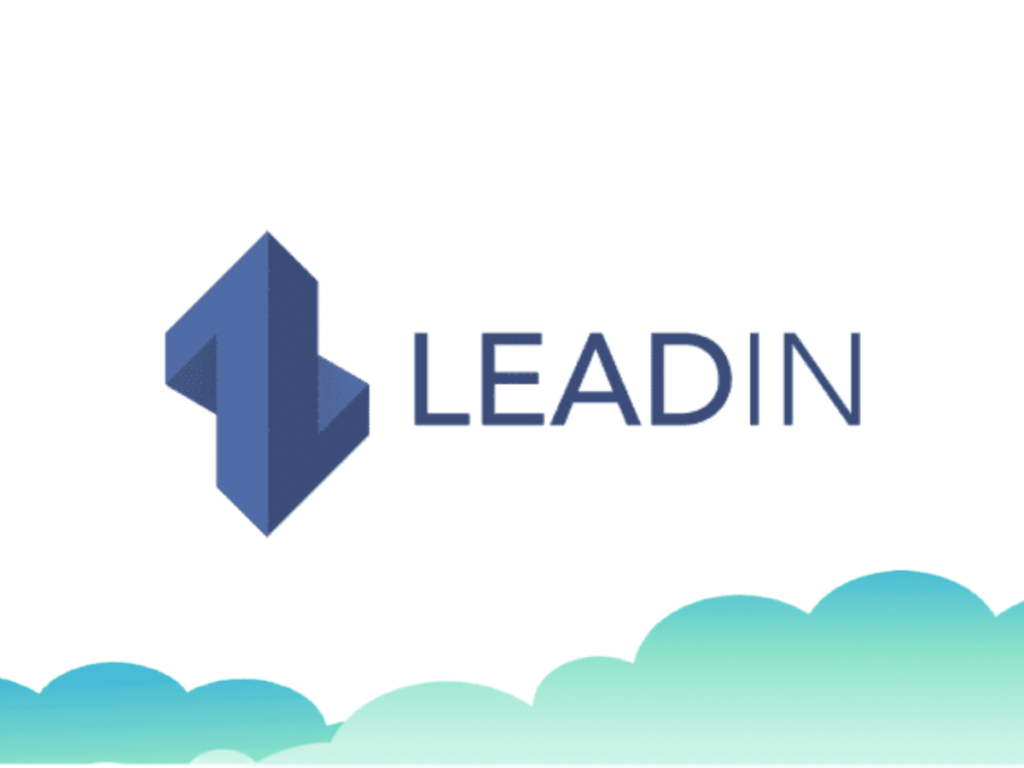” Thank you “… that’s a nice word that we unfortunately hear far too rarely in the business world. If you’ve landed on this article on LeadIn, it’s because you want to show your appreciation and express your gratitude to a potential future employer, partner, prospect or peer.
As you will see in this practical guide, the thank you email is not just a sincere and authentic way to say “thank you”. It is also an excellent format to “formalize” verbal exchanges, recap points to ensure that you and your interviewer are on the same page, distinguish yourself from other candidates in the case of a job interview, or gently follow up with a prospect.
In need of inspiration? Discover the 6 golden rules for writing a professional thank you email, as well as our 5 ready-to-use templates.
What is a thank you email?
As the name suggests, a thank you email is an email that we send to express our gratitude to someone for various reasons. It could be a potential employer who granted you a job interview, a prospect who gave you time to develop your sales pitch, a collaborator or one of your peers who provided you with valuable assistance in a project, a person who recommended you, a partner who gave you his confidence, etc. It is therefore, above all, a message of sincere, authentic gratitude, which comes from the heart. But the interest of this email goes beyond the simple act of politeness:
It contributes to your personal branding. You build a reputation as a courteous, respectful and appreciative professional… qualities that are worth their weight in gold in the corporate world.
Sometimes, the thank you email can formalize (or semi-formalize) a verbal agreement.
The thank you email can also serve as a summary of the main points of the previous exchanges. It therefore allows for confirmation of decisions made and next steps, if any.
6 golden rules for a good thank you email
You have to write a thank-you email and you fear the wrong note? Just follow these 6 golden rules!
#1 Restraint, tact and relevance
If you have to remember only one tip for writing your thank you email, it is this: don’t overdo it. To drown in heavy, syrupy, honeyed language is to risk making your interlocutor uncomfortable. This is probably the best way to discourage an employer, a potential client or a partner from following up with you. There is no need to reinvent the wheel by abusing superlatives and lyrical flights of fancy. Restraint, tact and relevance will be your best allies. However, be careful not to fall into the other extreme. The idea is not to send a telegram with a simple “Thank you” either.
Keep it simple, and adopt a tone of voice that reflects the relationship you have with the person you are talking to. Don’t play a role. Be yourself. Use the examples at the end of this article for inspiration.
#2 Personalization is a matter of course
When it comes to demonstrating the impact of personalization on email campaigns, studies follow one another. Of course, we are in a different context here, but the objective is the same: to encourage the opening and response to the thank-you email. In this case, personalization is a matter of course because you are addressing a person you know personally. Make sure you address your contact with his or her first and last name in the body of the email and possibly in the subject line. A study by Yesmail that looked at 7 billion emails explains that personalized objects boost the open rate by 58%. It would be a pity to deprive yourself of it!
#3 A short email, with one exception
Don’t lose sight of the objective: thank your contact for their time, help, recommendation, etc. As a general rule, you don’t need more than two or three sentences to express your feelings of gratitude and appreciation. The idea is to thank the person you’re talking to, not to waste their time or frustrate them with something they probably won’t read.
In a groundbreaking study, Boomerang analyzed more than 40 million emails sent. Logically, it is the short emails, between 50 and 100 words, that generate the most responses. In a context where inboxes are more like teeming hives that never rest, your interlocutor will appreciate your brevity and relevance.
The only exception to this injunction is thank-you emails, which should recap long verbal exchanges. In this case, it is legitimate to “sacrifice” brevity for the sake of completeness, especially if the stakes are high.
#4 The thank-you email should not “close” the exchange
Whatever your reason for expressing your gratitude to your interlocutor, your thank you email should not be the end of the conversation. Make sure you end up with an opening. For example, if you want to thank a partner for a referral, you can conclude your email by promising to inform them of the outcome of your exchange with the third person, if they wish.
#5 Sign your thank you email
Your interlocutor must be able to identify you, with your first and last name or your position, but also to contact you other than by answering your email. It can be your phone number, your LinkedIn account or, if you are very busy, a link to your electronic calendar (via Calendly for example).
If you don’t have a professional email signature, this may be your chance to remedy that! Indeed, this little addition to your email accumulates good points:
Email signatures give a professional touch to your message;
They facilitate and encourage direct contact;
They allow you to spread information throughout your emails. For example, you can insert a banner about an event you are organizing;
Email signatures give insight into your personality, as they allow for creativity in colors, images, layouts and text… which is not necessarily the case with the body of the email;
Email signatures can drive traffic to your social media profiles, which can bring you new followers and a qualified audience.
#6 Bullet lists are good for you!
Bulleted lists are an essential part of business writing. They help organize information and make it easier to read… and easier to write! So feel free to use it to summarize points, list documents, list steps, etc. Here are some tips:
Do not exceed two lines per list item.
If you can, make the lines the same length. It is more harmonious, more balanced and more pleasant for the reader.
Put the first words of each line in bold to create two levels of reading: if your interlocutor is busy, he or she can simply read these “headings” without going further.
As a general rule, each line of the bulleted list is concluded with a period if it is a complete sentence, or with a semicolon if it is an incomplete sentence.
Number your list if they are organized chronologically.
Pay attention to the formatting of the line that comes after the bulleted list. It must be separated from the last element of the list by an empty line, and start further to the left of the list, without indentation.
5 examples of thank you emails depending on the situation
In the practical part, we propose 5 examples of thank-you emails to show your gratitude to a future employer, a loyal client, someone you know who recommended you to a potential client, etc.
#1 Example of a thank you email after a job interview
You just had a job interview, and things went pretty well. You want to mark the occasion and send a thank you email to your potential future employer. Here are two examples to inspire you, to be customized to your situation.
” Ms. or Mr. (name of your contact person),
Following our meeting at [date], I would like to thank you for the time you have given me. I hope that this exchange has allowed you to measure my motivation to join [nom de l’entreprise] as [poste pourvu].
I look forward to hearing from you and hope that you will be favourable to my request.
#2 Example of a thank you email following a hiring
After your interview, you received a favorable response by email or phone. Why not send a small thank you email to your future employer to start this new adventure on the right foot? Try to show your enthusiasm and motivation, without going into superlatives. Avoid these phrases that we have unfortunately come across several times:
” I will be grateful for the rest of my life that you recruited me”;
“Thank you so much, you won’t regret it”;
“I will be the model employee, I guarantee it”;
“Thank you for helping me land my dream job, I will make you proud”.
Last tip: your future employer is probably overworked. Make sure your thank you email doesn’t necessarily require a response. Here is an example, to be adapted to your needs.
“Dear Human Resources Manager,
I am writing this short message to thank you once again for having selected my application and to renew my motivation to carry out the missions that you will entrust to me from (date of taking up my duties).
Thank you for your confidence and see you soon.
Sincerely yours.
#3 Sample thank you email after a referral
An acquaintance, a professional relationship or a peer has put you in touch with a potential client or partner. You wish to send him a thank you email to show your appreciation. Here is an example.
” Hello (name of your contact),
I hope you are well.
I just wanted to thank you for putting me in touch with (name of the person). We share a strong interest in this topic and our first exchanges are very promising. I will keep you informed on the next steps.
Have a nice day.
#4 Example of a thank you email after a recommendation
Did one of your most loyal customers recommend you to a business acquaintance? Excellent! This says a lot about the relevance of your value proposition and (especially) the quality of your customer service. Take this opportunity to show your appreciation to this ambassador, including when your loyalty program provides business benefits for referrals. Here is an example
” Dear (name of client),
Exactly (number of years the client has been in business), (name of the company) entrusted us with their issues in (problem). We are delighted by the trust you continue to place in us after all these years, to the point of recommending us to your contacts. We will continue to mobilize our efforts to serve your performance.
With all our gratitude
(name of your company) “.
#5 Sample thank you email after a customer meeting
At the end of a meeting during which you presented your company’s offer, you want to thank the prospect who gave you time and asked you relevant questions. You also want to take the opportunity to follow up with the prospect without being pushy, while making sure they have all the information they need to make their decision. Include a short summary of the various components of your presentation in the body of the email, and offer a PDF of the presentation as an attachment. If some of your prospect’s questions were left unanswered during the meeting, take the opportunity to answer them. Here is an example.
” Hello (name),
I wanted to thank you for the time you gave me (date). I hope that my presentation has helped you in your thinking. As a reminder, we reviewed the following:
I have detailed the expected benefits of our product in the context of your problem, particularly in terms of (detail the problem and the bread points using the verbatim of your interlocutor);
I have provided you with a demonstration of our solution, including (detail the features) ;
Your team asked me some important questions about (topic). I am sending you my answers in the attachment n°1;
We agreed on a second appointment (date and time), with (people concerned).
You will find the PDF of the presentation in attachment n°2.
Do not hesitate if you need additional information. I can be reached by email and by phone at (phone number).
We look forward to talking again!
Have a nice day.”







